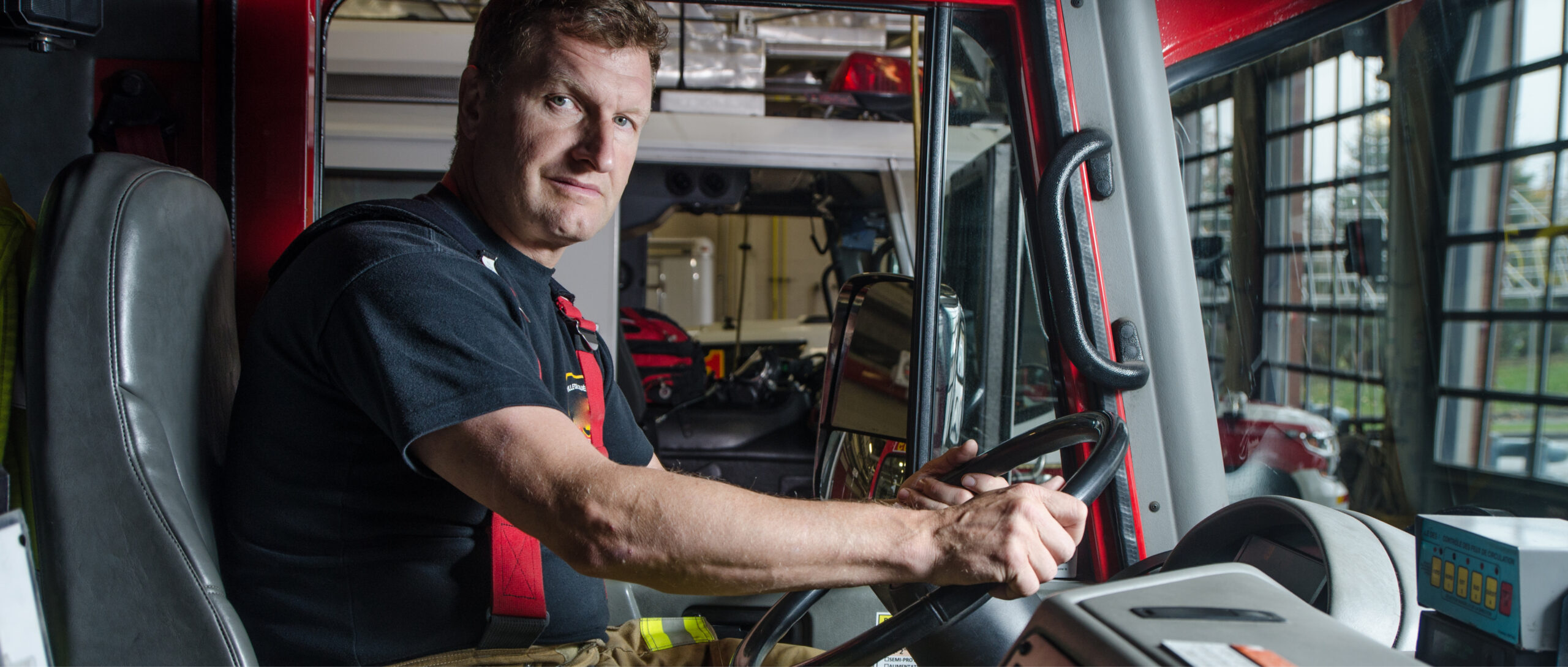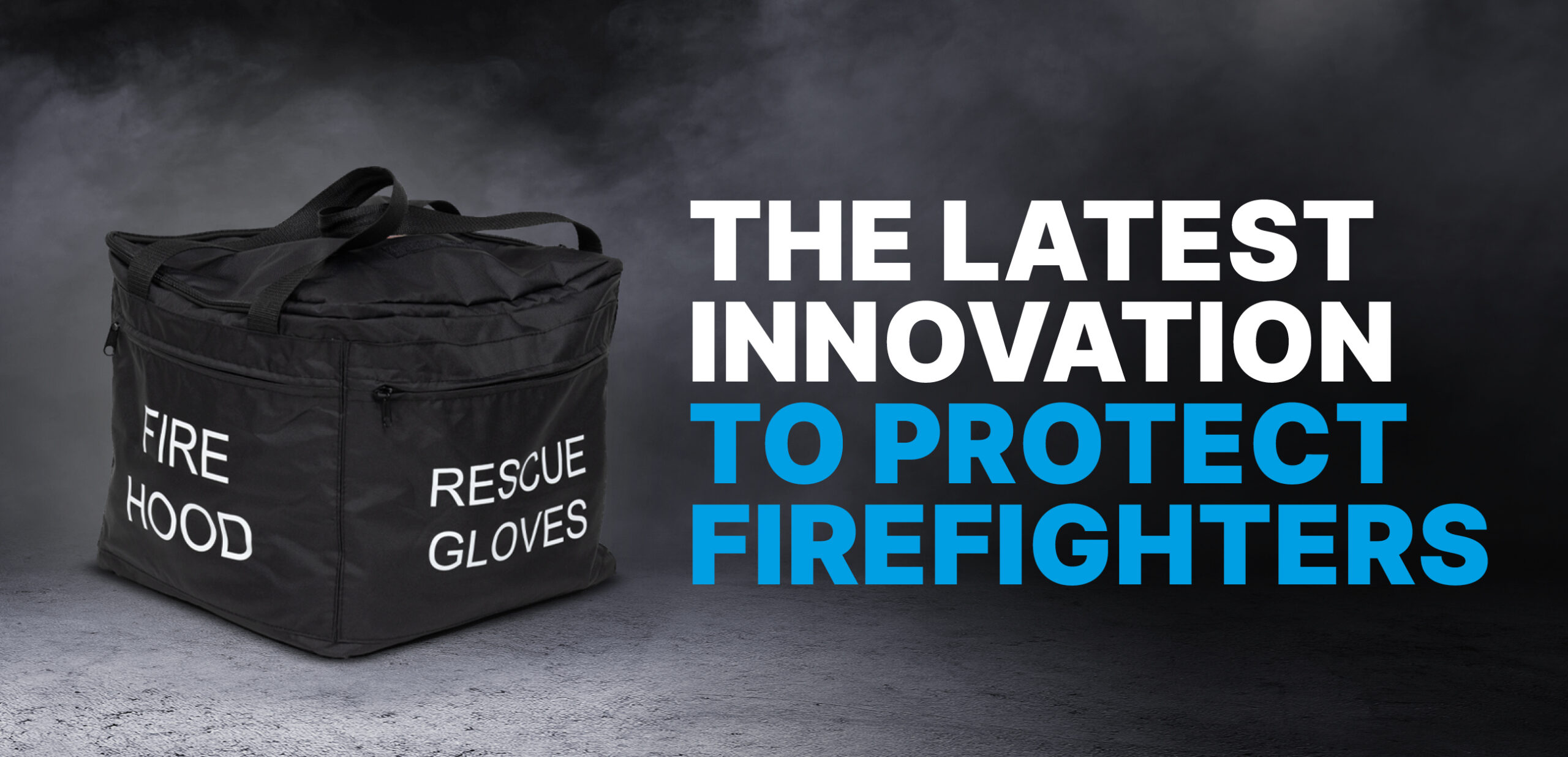What is the Clean Cab Policy?
The ‘Clean Cab Policy’ is a measure that was introduced to protect firefighters from dangerous carcinogens which have been shown to significantly increase the risk of cancer and other diseases. As we all know, research over the last 15 years has demonstrated the correlation between firefighting and increased risk in cancer.
The Clean Cab policy attempts to prevent these carcinogens from being transferred by raising awareness of contaminated equipment around the interior of the cab and increasing rigorous cleaning requirements. This introduced improvements in the decontamination process to ensure that these substances are not transferred from the clothing of firefighters to the seating and interior of fire-vehicles. Through the accidental transposition of these cancer-causing carcinogens from the scene of a fire to the vehicle, firefighters risk exposing themselves and others to potentially hazardous particulates and chemicals.
Why Does This Matter?
After an Incident, carcinogenic substances will have contaminated the external surface of the uniform of firefighters under their fire kit. This contamination then transfers to the Cab of the vehicle. Research has suggested that the absorption rate of human skin increases by 400% from a temperature rise of as little as five degrees Celsius. This increased absorption rate combined with cross-contamination of vehicle seats and equipment could introduce smoke and hazardous particulates onto the skin and therefore into the body, contributing to higher chances of illness.
It’s then apparent that whilst both DECON and the Clean Cab initiatives outline measures to reduce the risk of spreading toxic chemicals, action needs to be taken to increase protective and preventative measures. By only focusing on the aftermath, the harm could have already been done. So, what is the solution to keeping firefighters safe?
Why isn’t DECON enough?
A fundamental component of DECON is removing the contaminated fire kit, safely bagging it and cleaning the skin and hair with specialist wipes at the scene including washing all possible clothing and equipment. This is absolutely essential to ensure the contamination is removed off the skin as soon as possible, but you are actually only cleaning off, what didn’t go in! The rest of the contaminants have gone inside the body – to be sweated out later – or some of it.
Additionally, some firefighters are required to wear their uniform home after a call-out and washing it with their families washing, thus potentially spreading the contaminants. This can lead to family members suffering the same dire consequences of harmful chemicals, without ever encountering a fire themselves. Flaws with decontamination processes and the Clean Cab policy can mean that equipment which is re-used and harder to clean, such as helmets and gloves, can serve as a receptacle for the transference of contaminated particles. With the use of our protective baselayers a fundamental step is added into DECON and the Clean Cab policy to shield firefighters and loved ones from carcinogens.
What Are the Risks Associated with Contamination?
It is estimated that approximately 15 million firefighters around the globe are regularly exposed to extremely dangerous carcinogenic contaminants. It is due to this that firefighters are four times more likely to be diagnosed with cancer in their lifetime than the general public. It’s well known that cancer is the number one cause of death in the field.
Once contaminants reach the skin, the damage is done.
Studies have shown that skin cancer and testicular cancer are the most common cancers that affect firefighters. In order to reduce these severe illnesses, preventative measures need to be facilitated alongside DECON and the Clean Cab policy. Unfortunately, the nature of fighting fires requires a lot of exposure to these contaminants, so, instead of simply decontaminating after the fire, a head-to-toe preventative measure must be implemented.
We recognise that there are also a myriad of health problems that arise from the contamination of ‘forever chemicals’. These ‘forever chemicals’, such as PFAS and PFOS, are man-made and are resistant to water, grease and heat and are currently in firefighters fire kit. The carbon-fluorine bonds of PFAS are amongst the strongest in nature, meaning that they do not organically break down for a multitude of years.
The danger of contamination from these ‘forever chemicals’ include cancers, high cholesterol, thyroid disease, fertility problems and even newborn death. To limit exposure to these forever chemicals, Enduro Protect wear does not contain PFAS and PFOS.
Isn’t it our duty to protect those who protect so many?
Protection Through Prevention: How Does Baselayer Protection Protect Firefighters?
Enduro Protect Baselayer is designed to be donned over the top of an Operational Firefighters Stationwear. The leggings are pre-positioned in the outer leggings and the zip top on the hook at their position. On a Call-Out, the Firefighter will put on the zip top and pull up the leggings with the outer leggings. This creates the seal from contaminants. They then don the outer Tunic and depart from the Station. After the fire Incident, whilst on the fireground, they will doff their contaminated PPE and bag it.
They then doff their contaminated Baselayer and bag it and climb into the cab in their clean uniform (that hasn’t suffered the usual contamination). This will reduce the contamination in the cab and of course, back at the Station. With our head-to-toe protection from our Flash Hood, Baselayer, Liner gloves and socks, our baselayers are designed protect you, your colleagues and your family.
The work to protect our firefighters from carcinogens is in prevention. By stopping contaminants entering the skin, the chance of illness and cross-contamination is decreased. The standard baselayer used by firefighters does not insulate the wearer against the absorption of carcinogens into the skin. Any time a firefighter can smell the smoke of a fire on their skin, the carcinogens have penetrated the skin too.
Enduro Protect’s Baselayers protect the wearer from 98.34 – 99.99% of cancer-causing harmful smoke and particulates.
One of the considerations Enduro Protect has made in the construction of our own baselayers is to ensure its longevity. After three years of rigorous development, our baselayers will remain at a high blocking efficiency even after 100 wash/dry cycles.
At Enduro Protect, we are passionate about protecting those that protect us.
As it stands, the astronomical risk of cancer and other life-threatening illnesses that are not adequately safeguarded against, is a mountainous problem. With the Enduro Protect Baselayers we effectively protect firefighters from head to toe. Our Flash Hood has all-over head protection from the carcinogens and an extended pelerine to provide better protection over the neck. Our Liner gloves mean that you can keep your hands clean without wearing nitrile gloves – they can be washed and re-used too! Our socks provide the same protection, so with the Enduro Protect Baselayer Ensemble, the firefighters body is completely protected.
All of the baselayers are ergonomic garments that combine safety with comfort and style. Keeping the core body temperature at safe levels is a significant issue when it comes to fighting fires; to combat this, our Baselayer will protect you from the heat and manage your body temperature post-wear to reduce the affect of heat stress.
The accepted status quo is that a firefighter is 4 times more likely to get cancer than persons working in non-hazardous occupations. Our mission, is that with prevention prior to exposure and strong Decon principles a firefighter should be no more likely to suffer cancer or other terminal illnesses.
Head-to-toe protection against carcinogens and forever chemicals should be non-negotiable when it comes to the safety of firefighters. With the combination of DECON, the ‘Clean Cab’ policy and our unique Baselayer, we can work together to prevent occupational related cancer and disease in the workplace.
Keep clean and save lives with Enduro Protect. Call our experts today on 01235 514290 or view the Enduro Baselayer











